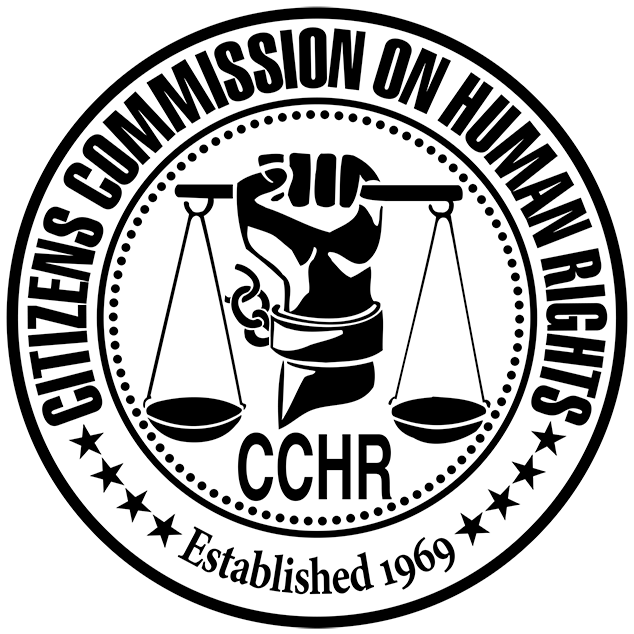Evidence of benefit from ADHD diagnosis and treatment is uncertain, but the ADHD label itself, as well as the stimulant drugs that may be prescribed as treatment, can harm children, researchers find. Addressing behavior instead of diagnosing is advised.
The Citizens Commission on Human Rights (CCHR) has long warned about the potential harm of giving inattentive and overactive children the psychiatric label of attention-deficit/hyperactivity disorder (ADHD) and prescribing them stimulant drugs as treatment, rather than addressing the true underlying causes of the behavior. A new analysis of evidence on ADHD diagnosis and treatment details how the labeling itself, as well as the stimulant drugs that may be prescribed as treatment, carry potentially harmful consequences for children, while evidence of any benefit is uncertain. The study’s researchers call for a greater focus on the care and appropriate support of children with behavioral issues, rather than on whether they should be given the psychiatric label of ADHD.

The prevalence of ADHD in children has been rising for several decades without any accompanying increase in the severity and frequency of symptoms, according to Australian researchers who analyzed the benefits and harms of ADHD diagnosis. This indicates children are being wrongly diagnosed, as ADHD diagnosis is highly subjective.
“Rising rates of ADHD diagnosis without changes in behavioural symptom profiles suggest an epidemic of ADHD diagnosis, not an epidemic of ADHD,” wrote lead author Luise Kazda of the Sydney School of Public Health at the University of Sydney in Australia.
Kazda and colleagues point out that diagnostic labels can be harmful and that “evidence that all children given an ADHD diagnosis will benefit from the diagnosis is currently lacking.” They cite a study finding that children with low and moderate levels of inattentiveness or overactivity who were given an ADHD diagnosis scored lower in reading and math than children with similar levels of symptoms who were not diagnosed with ADHD.
The researchers also reference studies that indicate “an ADHD diagnosis does not protect children against adverse adademic or socioemotional outcomes and has a negative effect on young adults’ ability to get and keep jobs.”
A 2022 study by Kazda and colleagues found that labeling teens with a diagnosis of ADHD does not lead to any improvement in their quality of life compared to teens not diagnosed with ADHD, but it is associated with lower self-esteem, worse social behavior, and a significantly increased risk of self-harm. The negative outcomes were greatest in those adolescents who were diagnosed with ADHD earliest (6-7 years of age).
Other research has found that individuals who are given diagnostic labels may experience harmful psychological consequences, including sadness, anxiety, confusion, and perceptions of themselves as unwell, less competent, powerless, stigmatized, and isolated.
The psychiatric label of ADHD often leads to treatment with prescription stimulants. These drugs are classifed by the U.S. Food and Drug Administration (FDA) as Schedule II controlled substances, defined as “drugs with a high potential for abuse, with use potentially leading to severe psychological or physical dependence.” Stimulant drugs commonly prescribed for ADHD include Ritalin, Concerta, Adderall and Vyvanse.
The FDA recently required an update to the prescribing information for stimulants to warn that the drugs carry the risks of misuse, abuse, addiction, and overdose. According to the 2019 National Survey on Drug Use and Health, 1.8 million teens ages 12-17 and 4.3 million young adults ages 18-25 reported taking prescription stimulant drugs in the past year. Among those users, 430,000 teens (24%, or one in four teen users) and 1.9 million young adults (45%, or nearly half of young adult users) reported misuse of their prescription stimulants.
As for results in children who take stimulant drugs, research has found no convincing evidence of any long-term benefit. Meanwhile, the drugs carry the risks of side effects that include loss of appetite, difficulty sleeping, anxiety, headaches, nausea and vomiting, tremors, and increased heart rate and blood pressure. Though rare, heart disease, psychosis, seizures, and stroke have a greater chance of occurring. Stimulants have also been linked to delayed growth in children. The stimulant-type ADHD drug methylphenidate has been associated with an increased risk of depression in children.
Given the uncertain benefits and known harms of ADHD diagnosis and treatment, Kazda and colleagues argue for community health organizations and schools to deliver “services that focus on behaviours (rather than on diagnoses) to optimise children’s skills and functioning.” They call for inclusive educational environments that “tackle the needs of all children, irrespective of their hyperactive/inattentive behaviours, without requiring a diagnosis.” Their findings were published in the British Medical Association’s journal, The BMJ.
Mary Ann Block, D.O., author of No More ADHD, has written that providing children with appropriate services that address the underlying causes of children’s inattention or hyperactivity can eliminate any reason for an ADHD diagnosis or stimulant drug treatment.
“By taking a thorough history and giving these children a complete physical exam as well as doing lab tests and allergy testing, I have consistently found that these children do not have ADHD, but instead have allergies, dietary problems, nutritional deficiencies, thyroid problems and learning difficulties that are causing their symptoms,” she wrote. “All of these medical and educational problems can be treated, allowing the child to be successful, without being drugged.”
WARNING: Anyone wishing to discontinue or change the dose of an ADHD drug or any other psychiatric drug is cautioned to do so only under the supervision of a physician because of potentially dangerous withdrawal symptoms.
